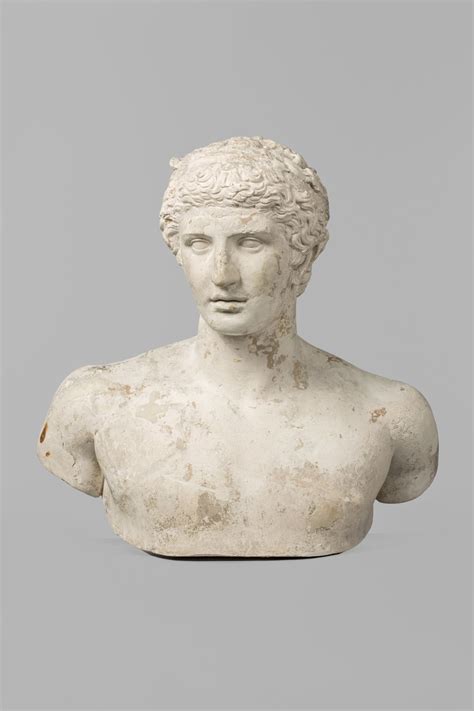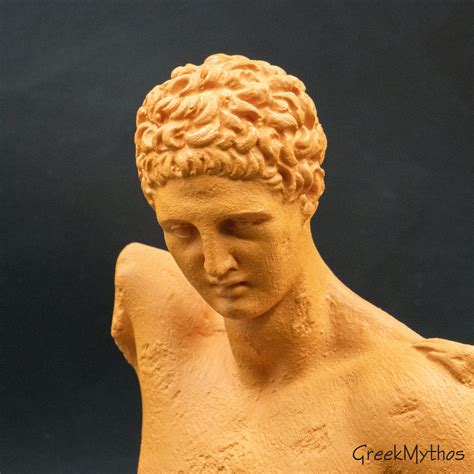hermes and the infant dionysos | hermes by praxiteles hermes and the infant dionysos Hermes and the Infant Dionysos, Archaeological Museum of Olympia. Hermes and the Infant Dionysus, also known as the Hermes of Praxiteles or the Hermes of Olympia is an ancient Greek sculpture of Hermes and the infant Dionysus discovered in 1877 in the ruins of the Temple of Hera, Olympia, in Greece.It is displayed at the Archaeological Museum of Olympia. . Hyperion. Main Class. Arcanist Lv 80. Level 20-50 Leveling Guide. I made this list up to show areas by increments of 3 levels with the highest density of fates for said level to allow for the most efficient use of time while waiting on duty finder. I also included a list of dungeons in order by level increment.
0 · torso of hermes after polykleitos
1 · the god hermes by praxiteles
2 · the death of laocoon and his sons
3 · hermes by praxiteles
4 · hermes bearing the infant dionysus
5 · hellenistic statue of hermes
6 · dionysus and hermes relationship
7 · aphrodite of knidos by praxiteles
Level 2 Skillchains. Level 2 Skillchains can be Magic Bursted using two elements and their aligned weapon skills combine to make either another Level 2 Skillchain or a Level 3 Skillchain. Like Level 1 Skillchains, these can be used circularly to increase the number of weapon skills in a chain before elevating it to level 3, but it requires a .
Greek sculpture. In Western sculpture: Late Classical period (c. 400–323 bce) The Hermes Carrying the Infant Dionysus at Olympia, which may be an original from his hand, gives an .
Hermes and the Infant Dionysus, also known as the Hermes of Praxiteles or the Hermes of Olympia is an ancient Greek sculpture of Hermes and the infant Dionysus discovered in 1877 .Thomas Davidson, Praxiteles' Hermes with the Infant Dionysos, The American Art Review, Vol. 1, No. 1 (Nov., 1879), pp. 24-28
Hermes and the Infant Dionysos, Archaeological Museum of Olympia. Hermes and the Infant Dionysus, also known as the Hermes of Praxiteles or the Hermes of Olympia is an ancient Greek sculpture of Hermes and the infant Dionysus discovered in 1877 in the ruins of the Temple of Hera, Olympia, in Greece.It is displayed at the Archaeological Museum of Olympia. . This statue was uncovered during excavations in 1877 at the Temple of Hera at Olympia.The statue captures the myth where Hermes takes the baby Dionysos to the Nymphs, where on his way he rests upon a tree trunk, having thrown his cloak over it. It is suggested that the right hand may have held some grapes, associated with the god of wine, Dionysos. The .
Hermes and the Infant Dionysos. Also called the Hermes of Olympia or the Hermes of Praxiteles. Scholarship is divided over whether this is a Greek original by famed sculptor, Praxiteles, a Roman copy of his statue, or the work of a lesser-known sculptor of the same name. If it is a Greek original, its survival is unique. Praxiteles: "Hermes with the Young Dionysus". Marble sculpture (c. 340 BC.). Archaeological Museum, Olympia. The statue represents the god Hermes standing in a relaxed pose, holding the infant Dionysus on his arm, and playing with him.Hermes with the Infant Dionysus. Classical Greek . replica: from the Louvre, Paris. date of the original: mid-4th century BC. . While the proportions of the infant Dionysus are not quite lifelike, the inclusion of babies/children in Late Classical sculpture is significant of social changes, of the prevailing secularism and sentimentalism from .This is a damaged cast of the Hermes and the Infant Dionysos excavated from the Heraion at Olympia in 1877 and seen by Pausanias in the 2nd c. CE, who attributed the work to the 4th c. BCE sculptor Praxiteles (5.17.3-4). The statue group represents the period following Dionysos' birth from Zeus' thigh, when the king of the gods handed the .
The myth depicted, I believe, is Hermes bringing the infant Dionysos to King Athamas and Ino, one of the mythological versions of Dionysos' childhood3. Zeus, who retrieved the un-born fetus of Dionysos from Semele before her death by thun-derbolt, placed the fetus in his thigh in order to protect it from the jealousy of Hera.
Hermes and the Infant Dionysus by Praxiteles From the temple of Hera, Olympia c. 330 B.C. Museum, Olympia This Hermes of Praxiteles captures the contained and thoughtful spirit of the fourth century.Hermes strides to the right, holding the infant Dionysos. Hermes wears a petosos (his three-cornered hat) and flowing chlamys. Dionysos is wrapped in a folded garment. Commentary The subject of Dionysos's childhood was popular during the late Hellenistic-early Roman period. The classicizing and graceful figures seen here are characteristic of .According to myth, Hermes and Dionysos were sons of Zeus, but by different mothers (the princess Semele and the minor goddess Maia, respectively). To protect the infant Dionysos, Zeus entrusted him to Hermes, who together with a band of nymphs, hid the child near Mt. Nysa in Anatolia (modern Turkey).
Witnessing History Through Praxiteles’ Hermes: A Sculptural Marvel. The "Hermes of Praxiteles" is one of the most renowned sculptures of ancient Greece, believed to have been crafted around 330 BC by the acclaimed sculptor Praxiteles.This masterpiece of the classical era stands as an epitome of grace, showcasing the divine messenger and son of Zeus, Hermes, .
Praxiteles: Hermes Carrying the Infant Dionysus Hermes Carrying the Infant Dionysus, marble statue by Praxiteles, c. 350–330 bce (or perhaps a fine Hellenistic copy of his original); in the Archaeological Museum, Olympia, Greece. Height 2.15 metres.This is a damaged cast of the Hermes and the Infant Dionysos excavated from the Heraion at Olympia in 1877 and seen by Pausanias in the 2nd c. CE, who attributed the work to the 4th c. BCE sculptor Praxiteles (5.17.3-4). The statue group represents the period following Dionysos' birth from Zeus' thigh, when the king of the gods handed the .Hermes and the Infant Dionysus, also known as the Hermes of Praxiteles or the Hermes of Olympia is an ancient Greek sculpture of Hermes and the infant Dionysus discovered in 1877 in the ruins of the Temple of Hera, Olympia, in Greece. It is .We see the adult god Hermes (Roman Mercury) holding his baby brother, Dionysos (Bacchus). Hermes dangles something, now lost, and baby Dionysos reaches toward it. (Our cast restores a bunch of grapes along with the baby's arm, on the evidence of a .
Greek sculpture. In Western sculpture: Late Classical period (c. 400–323 bce) The Hermes Carrying the Infant Dionysus at Olympia, which may be an original from his hand, gives an idea of how effectively a master could make flesh of marble.Hermes and the Infant Dionysos. Also called the Hermes of Olympia or the Hermes of Praxiteles. Scholarship is divided over whether this is a Greek original by famed sculptor, Praxiteles, a Roman copy of his statue, or the work of a lesser-known sculptor of the same name.Hermes and the Infant Dionysus, also known as the Hermes of Praxiteles or the Hermes of Olympia is an ancient Greek sculpture of Hermes and the infant Dionysus discovered in 1877 in the ruins of the Temple of Hera, Olympia, in Greece. It is .
burberry šatka original
The statue of Hermes and the Infant Dionysus, supposedly created by Praxiteles, was discovered on May 8, 1877, but its influential presence makes it a timeless piece of Hellenism, and later, Western culture. It is seen as the epitome of . Hermes, Zeus’ son and one of the Olympian gods, is holding the infant Dionysos in his left arm. Acting as the divine messenger of his father, Hermes is about to deliver his little brother Dionysos, the god of wine and amusement, to the nymphs in Thebes. The statue of Hermes and the Infant Dionysus, supposedly created by Praxiteles, was discovered on May 8, 1877 but its influential presence makes it a timeless piece of Hellenism, and later, western culture itself. It is seen as the epitome .The only known surviving work from Praxiteles’ own hand, the marble statue Hermes Carrying the Infant Dionysus, is characterized by a delicate modeling of forms and exquisite surface finish. A few of his other works, described by ancient writers, survive in Roman copies.

torso of hermes after polykleitos

2.1 Kill Enemies. 2.2.1 Rare Boss FATEs. 2.2.2 Notorious Monster. 2.2.3 Chase. 2.3 Collect. 2.4 Defend. 2.5 Escort. 3 Shared FATE. 4 Hot Spots. 5 Tips and Tricks. 6 Additional Stormblood+ FATE Mechanics. 6.1 Experience Points Bonus. 6.2 Twist of Fate. 7 Achievements. FATE in 2.0 beta.
hermes and the infant dionysos|hermes by praxiteles



























